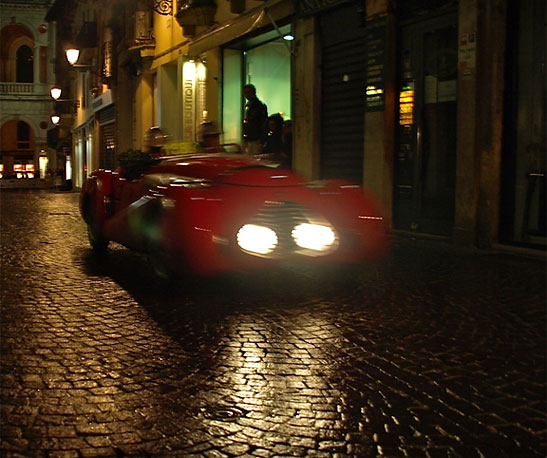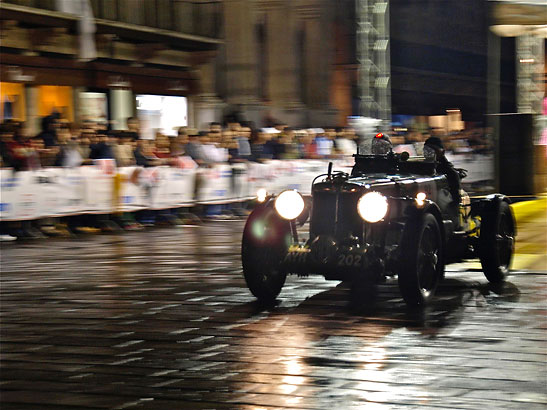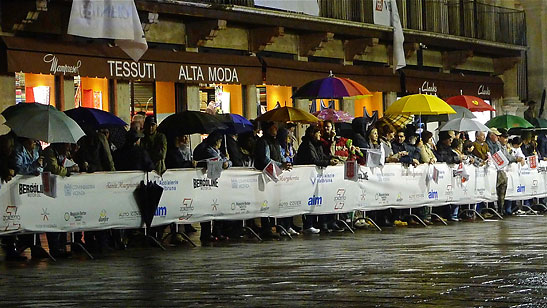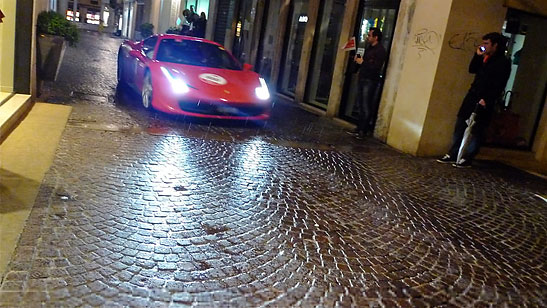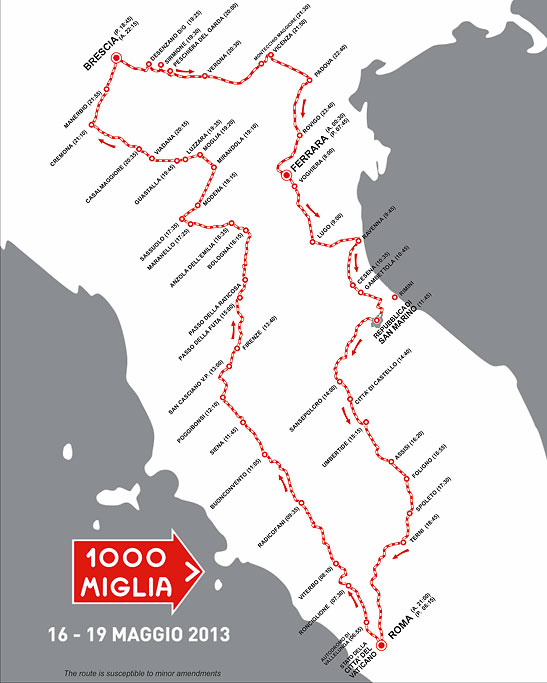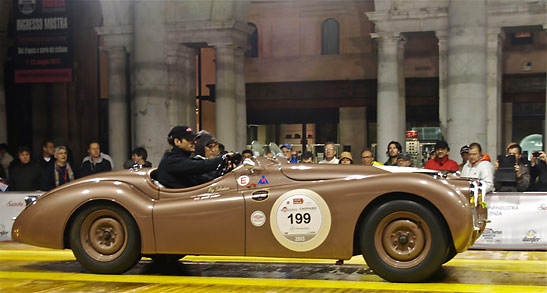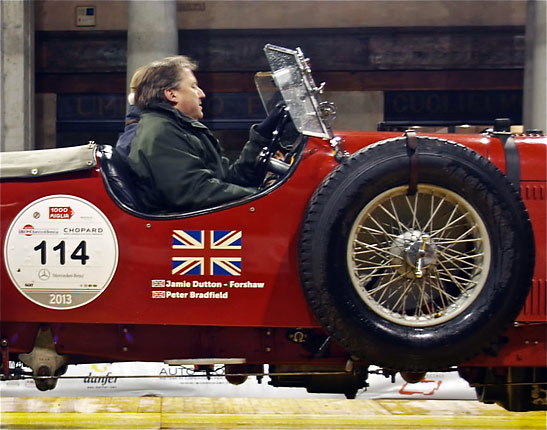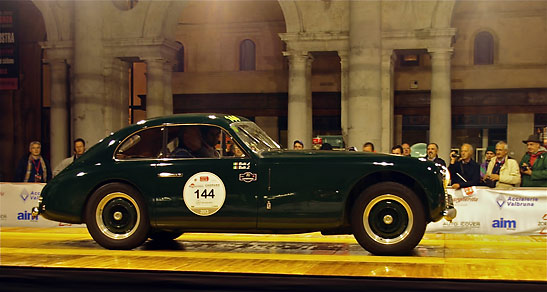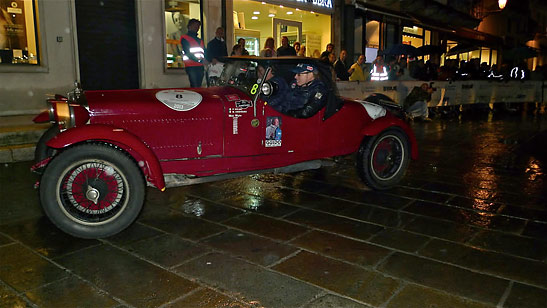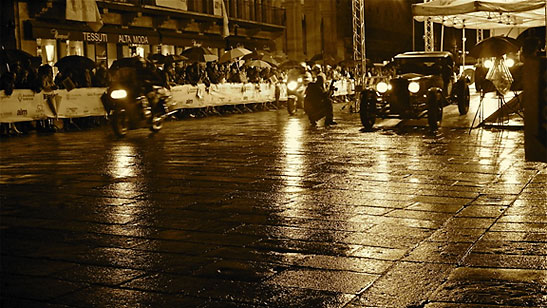|
Traveling Boy Bloggers on the
Move:
Mother Nature was not on her best behavior – or she just wanted to make the endurance that much tougher on "horse and rider" – as she pelted the "City of Palladio" earlier in the day with heavy rains, making the centuries-old stone below precarious and the road-weary pilots above tentative.
Under cover of umbrellas, thousands of Vicentini lined the route cheering loudly as each team honked as they sped by. Collectively, the fans felt goose bumps, the kind one feels when one has just witnessed history on four wheels roll right on by.
If pasta, pomodori and Prosecco help define Italy's dinner table, then motor racing, of ANY kind, helps define the Bel Paese's unquenchable thirst for competition. And no single race stirred that passion in her citizenry more than the Mille Miglia did. In the words of one of racing world's most famous personalities, the late Enzo Ferrari, the Mille Miglia was, la corsa più bella del mondo (the most beautiful race in the world).
The 1,000-mi. road race, rounded up from the actual distance of 992 mi., was a pedal-to-the-metal, white-knuckled, no-holds-barred road race – a la the chariot race scene from Ben Hur – that ran on public roads lined by millions of spectators from Brescia up north to Rome down south and back.
Today, the race is an annual commemorative rally dubbed the Mille Miglia Storica. It's still run on public roads during May and follows pretty much the same route as that of the classic; but, where the road race focused on neck-breaking, daredevil speeds over one non-stop, frenetic day, the Storica focuses on rally skills and safety over a less stressful three-day period.
The original "double M" thundered through six regions and one tiny republic, avoiding man and beast most of the time, from 1927 until 1957. It was legendary British racecar driver Sir Sterling Moss who set the record in the 1955 edition, covering the circuit in just 10 hrs. 7 min. 48 sec. Unfortunately, Moss' record-setting pace was one of the major reasons why the road-race format was eventually discontinued.
Many drivers were hell-bent on breaking Moss' record, only to fail. Marquis Alfonso de Portago, racing against the clock, died during the 1957 event when the Ferrari he was piloting blew a tire and flipped end-over-end into the crowd killing his co-pilot and nine spectators just a handful of miles shy of a top-four finish.
After that fateful '57 race, the Mille Miglia came to a screeching halt and ended up on blocks for nearly 25 years until the format was retooled. With new life in the tank, the event returned to the open road as the more sedate Mille Miglia Storica.
The iconic Sig. Ferrari got it absolutely correct back then in his description of the Mille Miglia. Even in today's reformatted version, it still remains the most beautiful race in the world. Related Articles: |
